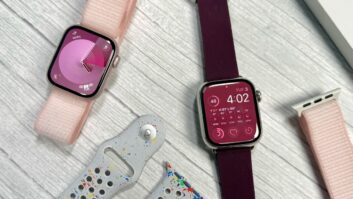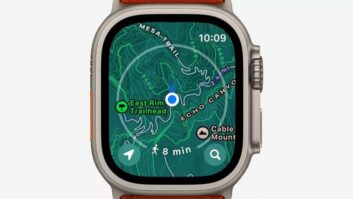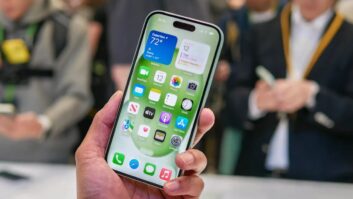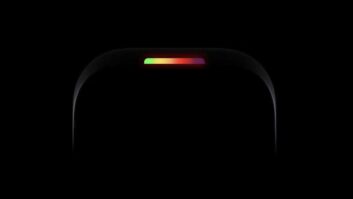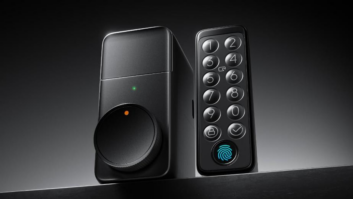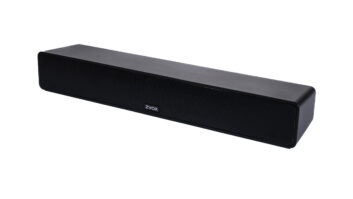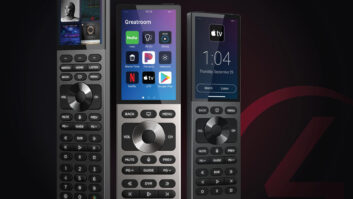NEW YORK – Apple Watch will be a big fish in a small market in 2015.
Analysts forecast that Apple will sell more Apple Watches in the first nine months of availability than all smart watches combined in 2014, rocketing it to the top of the market-share charts in 2015 despite less-than-a-day battery life and premium pricing.
Apple Watch will also bring visibility to the category, thanks to its brand name, fan base, advertising budget, deep retail presence and extensive apps, analysts said. Apple’s presence will lift sales of the smart-watch segment in general, but that doesn’t mean the smart-watch industry will reach a broad-based audience, at least for now, they noted.
Brent Iadarola, mobile and wireless research director for Frost & Sullivan, pointrf to high prices and low battery lives for Apple Watch and many other brands of smart watches will inhibit the smart-watch market.
Making tech companies responsible for fashion design “is much more of a challenge than a lot of people recognize,” he added.
The smart-watch use case is also uncertain at best. “In the absence of one killer application, vendors are throwing all the features from a smartphone into the watches to see what sticks,” said Futuresource Consulting. “This is having obvious effects on the size, aesthetics and the battery life of the smart watches.”
For his part, IHS analyst Antonios Maroulis said that although Apple will gain top share in 2015, the company still “needs to prove why consumers need a smar watch to confirm this is a mass market and to meet the expectations Apple has raised about the smart-watch category.” If Apple succeeds, he said, it will expand the addressable market and help other smart-watch makers, but “if Apple fails to make a case, then the smart-watch category will remain a niche, and all smart-watch makers will suffer.”
“The smart-watch market is still undefined,” he noted, though that was also true of the smart phone market at launch, he said.
Strategy Analytics forecasts that Apple will ship 15 million watches worldwide in 2015 out of total global shipments of 28.1 million units, giving Apple a 55 percent market share. Global smart-watch shipments will jump 511 percent to 28.1 million units in 2015, mostly because of the Apple Watch, said Strategy Analytics director Cliff Raskind.
Gartner analyst Annette Zimmermann agreed that Apple Watch “is bound to trigger more awareness for wearables, and Samsung, Sony, Lenovo and others will have to come up with more attractive products to compete.”
Frost & Sullivan’s Iadarola agreed that Apple’s launch “will create a larger buzz around the category” and help lift competing brands’ sales.
Apple Watch, at least in the first generation, is far from going mass market, he and others agreed.
First, Android users, who are generally more pricesensitive than Apple users, aren’t likely to switch to an iPhone in order to use the Apple Watch. The price points “are realistic for tech-savvy iPhone users,” but issues such as battery life will hold sales back, he said.
Strategy Analytics executive director Neil Mawston called Apple’s first-generation Watch “not yet perfect.” He also called it “arguably less attractive than some rival models such as the Huawei Watch.” A battery life of almost a day “might not be as long as many traditional wristwatch owners are used to,” he continued, and Apple’s premium pricing “may be challenging for mass-market consumers.” Apple, he said, “will need to upgrade tangibly its second-generation Watch to stay ahead of competitors later this year.”
For his part, Ronan de Renesse, Ovum’s lead consumer technology analyst, said Apple “will have to go beyond great design and materials if it wishes to take the Apple Watch to the mass market and convince iPhone users who don’t wear a watch to wear one.” Although the iPhone and iPad “redefined their respective device segments when they launched, the Apple Watch will not play that role,” he concluded.
De Renesse admits that Apple’s Watch “will be one of the best smart watches out there, but “the lack of unique use cases” for it means three things:
• “It won’t have a significant enough competitive edge versus Samsung, LG and Sony
• “Cheap design copycats will successfully thrive, especially in China where it is set to launch on April 24th;” and
• “its comparatively high $349 entry-level price point will be more difficult to sustain.”
The drawbacks will limit Apple’s 2015 sales to more than 10 million, he said. Strategy Analytics forecasts that 15 million Apple Watches will be sold in the first nine months of availability, while Piper Jaffray estimates 8 million will be sold during that time. Forrester Research puts the number at 10 million.
All of the forecasts put Apple’s nine-month sales ahead of global 2014 smart-watch sales. Strategy Analytics and Ovum agree that only 5 million smart watches were sold last year around the world. Futuresource Consulting puts the number at a little more than 6.1 million.
Apple’s relative success this year means Motorola and Samsung will lose their top market shares. A company called 1010data, which tracks what consumers buy online, found that for the three months ending February, Motorola’s dollar share was 26.6 percent, followed by Samsung’s 25.1 percent, Pebble’s 15.7 percent, LG at 11.3 percent, Asus at 4.5 percent, and Sony at 3.1 percent.
In units, the top brands were Samsung, Pebble and Motorola at 23.8 percent, 20.4 percent and 17.7 percent, respectively.
Apple sales will outpace these companies’ sales even though Apple’s Watch will be more costly and, in some cases, offer features lacking in other watches. For example, at $399, or $199 with AT&T contract, Samsung’s Gear S, based on the proprietary Tizen OS, offers built-in 2G/3G cellular to place voice calls and send messages independent of a smart phone.
Smart watches using the rival Android Wear OS are likewise priced lower than the opening-price Apple Watch. Samsung’s Gear Live is $199, while the LG G Watch R and Motorola Moto 360 are $299. Among lesser known brands, Burg offers a $199 smart watch with built in cellular for voice calls and texting, and Cogito offers a $99 model that provides notifications, features fitness functions, and has NFC for mobile payments. Pebble also offers smart watches below Apple’s opening price point.
But at least for now, Apple’s premium product will dominate the market, analysts said.




